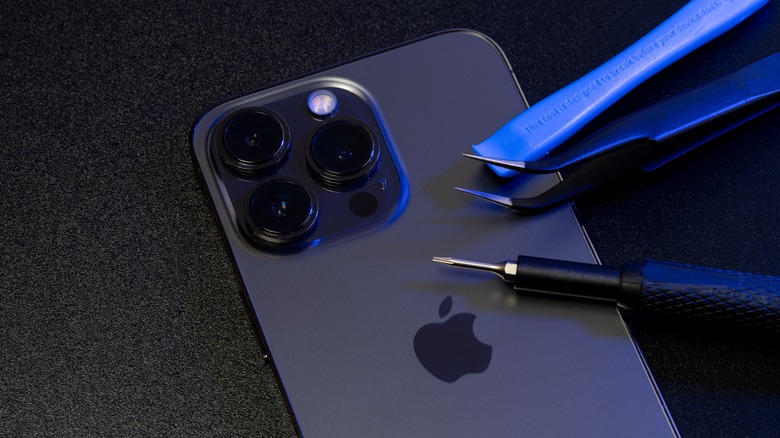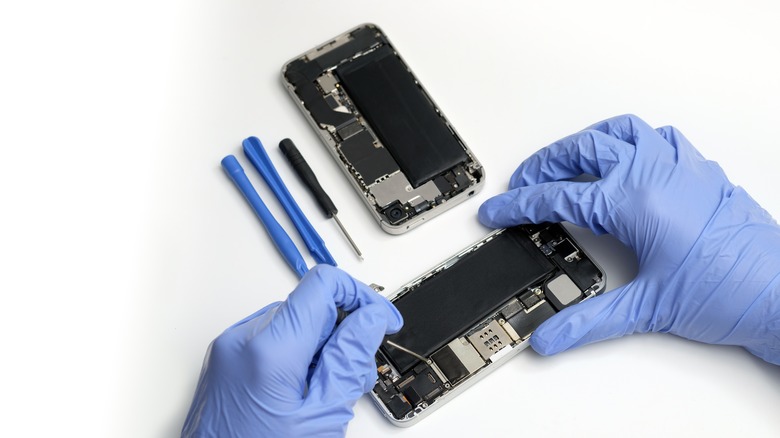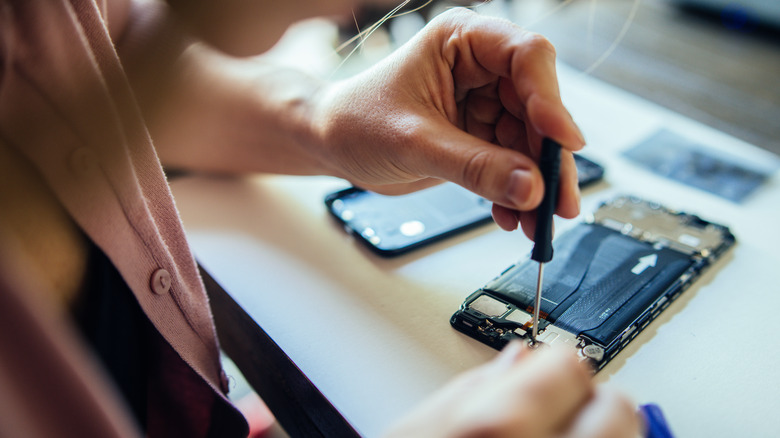While there’s a lot to love about iPhones, there’s also plenty to criticize about both these devices and the practices of its parent company, Apple. Among the most prevalent frustrations among iPhone users are the strict regulations Apple has put in place regarding repairs. The tech giant requires that users only do repairs with genuine Apple parts such as screens and batteries. Given the already astronomical base cost of purchasing an iPhone, it’s tempting to want to use cheaper third-party parts for repairs.
So are Apple’s practices truly done to get more money out of you, or are there true safety concerns with using third-party replacement pieces? According to Apple, there are a number of potential problems that can occur when replacement parts not authorized by the company are installed. Every piece that makes up your iPhone was specially designed and built to meet Apple’s quality standards, with extensive tests done before putting each item out for purchase.
Having repairs done by someone who is not authorized to fix Apple products means there’s no guarantee that they will use genuine iPhone parts to do the job, and not doing so can result in some serious consequences. For example, using a non-genuine iPhone screen can cause your device to work incorrectly or fail to register screen touches, as well as cause problems with display color and brightness. Using the incorrect battery model can bring about problems with software updates, battery health reporting, and charging,
How to tell if your iPhone has genuine parts
If you bought a fresh new iPhone from the Apple store or a similarly credible source, it’s guaranteed to be made using genuine Apple parts. However, if purchasing one secondhand, it may not be as easy to decipher if what you’re getting is the real deal. Likewise, you may also be curious if the repair service you sent your device to used real iPhone pieces. Thankfully, most recent iPhone models have made it easy to figure out the legitimacy of your device’s components.
Those using iPhones running on iOS 15.2 and later can learn of their phone’s service history and learn if the parts that make up their device are genuine or not. Here’s how to go about the process:
- Open Settings.
- Go to General.
- Select About.
- Here, you’ll be able to see your phone’s service history. If parts such as your screen or battery were made using authorized Apple parts, you’ll see a “Genuine” label.
While you can use this process to check for the battery status of the iPhone SE, you won’t be able to look up your display’s service history on these lower-cost options. Additionally, if you’re using any iPhone 15 or later with iOS 18, it will display a Used message if the screen or battery was previously installed in another iPhone, or an Unknown message will appear if the part is non-genuine.
Apple may be loosening its third party restrictions
Using genuine Apple parts may be a safer guarantee, but many might find these limitations restrictive. Using non-genuine Apple parts may even be necessary at times, depending on some budget levels or in the case of an emergency repair where you may not have immediate access to an Apple-authorized technician. Yet, with Apple’s tough warranties, iPhone users may not want to take such a risk.
However, 2024 has seen Apple loosening its belt on some of its prior restrictions and further strengthening the ever-growing Right to Repair movement. In April, Apple announced that it would be supporting used genuine parts for repairs with the release of its newest line of iPhones. This is thanks to the company’s efforts to increase the functionality and longevity of its parts to ensure that they can be reused safely. Additionally, the repair process has been simplified by not requiring users to submit their phone’s serial number for ordering parts unless it’s for repairs involving the logic board.
While Apple remains largely cautious with regard to the use of non-genuine parts for repairs, it has started to become more open to allowing some of its features to function properly with third-party parts. June would see Apple announce that the iPhone’s True Tone feature, an important auto brightness and display function, would be able to work on non-genuine displays. It may still be some time until Apple changes rules for crucial components such as batteries, but this is nevertheless a step in the right direction that will give iPhone users more options and flexibility.
Source: http://www.slashgear.com/1710547/is-it-okay-to-use-non-apple-replacement-parts-iphone-repair/
 iphone-release.com
iphone-release.com



